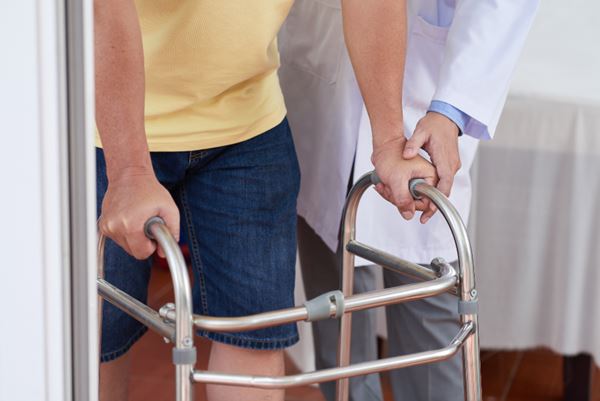Are You Experiencing Dizziness? It Could Be Your Ear
Every day we use our ears to hear, but these complex organs also help us maintain our balance. Deep within the inner ear is the vestibular system, which promotes our ability to stand steadily, stabilize eye position during head movement and move gracefully.
When it’s not functioning properly, the vestibular system can cause dizziness, vertigo, visual disturbance and imbalance. This makes it difficult to perform even simple tasks and activities. Specialized therapy called vestibular rehabilitation can help relieve these symptoms and improve quality of life.
How Did This Happen?
Some causes of dizziness and vestibular impairment include:
-
Benign Paroxysmal Positional Vertigo (BPPV)
-
Head trauma (concussions or serious brain injuries)
-
Vestibular neuritis (inflammation of the vestibular nerve)
-
Stroke
-
Medications
-
Perilymph fistula
-
Meniere’s disease
-
Post-surgery
These diagnoses may benefit from vestibular rehabilitation.
What’s Involved with Rehabilitation?
The goal of vestibular rehabilitation is three-fold: To improve a patient’s balance and dynamic gait, increase their stability and safety and decrease their risk of falling. Vestibular therapists want to help patients return to school, sports or work.
Therapy for vestibular disorders takes many forms. The type of exercise used depends upon the unique problems an individual demonstrates. Some are geared toward improving balance. Others help the brain improve your use of the vestibular system. Some exercises help improve visual clarity while moving.
Many patients participate in balance training that requires head movements while their eyes are focused on a target. These exercises will likely bring on symptoms of dizziness, but that’s the goal. Over time, patients become desensitized to these feelings and will experience less dizziness.
What Can I Expect on the First Day?
On the first day of rehabilitation, patients undergo a physical therapy vestibular evaluation. This means recording the patient’s dizziness history, along with any balance impairment, falls and vertigo issues. The therapist looks at the patient’s eyes to see how they’re moving and evaluates how well they are able to move their head while trying to focus their gaze. The therapist takes the patient through different positions to see if their dizziness worsens.
The therapist also assesses the patient’s gait and balance. Maintaining balance depends on three sensory systems: vision, somatosensation (the ability to know where one’s body is in space) and the vestibular system. These help identify problem areas so therapists can develop a personalized treatment plan.
How Does this Therapy Work?
The evidence supporting the effectiveness of vestibular rehabilitation is strong. It can promote recovery, expedite the recovery process, improve a person’s quality of life and increase their safety.
Typically, vestibular rehabilitation focuses on balance and gait training, which activates the vestibular system. This therapy teaches someone how to strengthen their vestibular system through gaze stabilization. These techniques require a patient to look at an object and keep the object in focus while they lift their head up and down or turn it side to side. This helps train their vestibulo-ocular reflex, which is responsible for keeping an image stable while the head and body are in motion.
In short, this therapy works to help improve the function of the vestibular system as well as desensitize feelings of dizziness through repeated exposure to provoking stimuli and positions. Once therapy is completed, patients are on their way to reclaiming the everyday activities they once enjoyed.
If you are experiencing dizziness or think vestibular therapy may help you, please contact 407-841-8911 to schedule your vestibular physical therapy evaluation.
Institute for Advanced Rehabilitation
Orlando Health Advanced Rehabilitation Institute patients directly benefit from Orlando Health’s network of services, including specialized physicians, state-of-the-art equipment and diagnostic services, and treatment options not available at other centers.
Learn More





